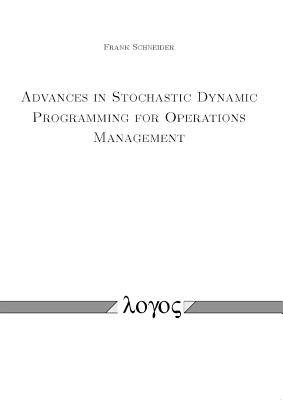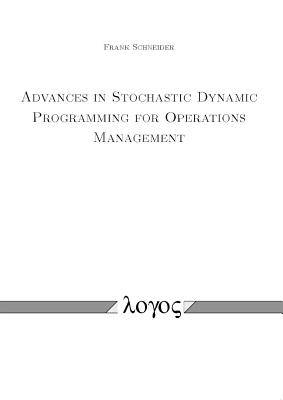
- Afhalen na 1 uur in een winkel met voorraad
- Gratis thuislevering in België vanaf € 30
- Ruim aanbod met 7 miljoen producten
- Afhalen na 1 uur in een winkel met voorraad
- Gratis thuislevering in België vanaf € 30
- Ruim aanbod met 7 miljoen producten
Zoeken
Advances in Stochastic Dynamic Programming for Operations Management
Frank Schneider
Paperback | Engels
€ 87,45
+ 174 punten
Omschrijving
Many tasks in operations management require the solution of complex optimization problems. Problems in which decisions are taken sequentially over time can be modeled and solved by dynamic programming. Real-world dynamic programming problems, however, exhibit complexity that cannot be handled by conventional solution techniques. This complexity may stem from large state and solution spaces, huge sets of possible actions, non-convexities in the objective function, and uncertainty. In this book, three highly complex real-world problems from the domain of operations management are modeled and solved by newly developed solution techniques based on stochastic dynamic programming. First, the problem of optimally scheduling participating demand units in an energy transmission network is considered. These units are scheduled such that total cost of supplying demand for electric energy is minimized under uncertainty in demand and generation. Second, the integrated problem of investment in and optimal operations of a network of battery swap stations under uncertain demand and energy prices is modeled and solved. Third, the inventory control problem of a multi-channel retailer selling through independent sales channels is modeled and optimality conditions for replenishment policies of simple structure are proven. This book introduces efficient approximation techniques based on approximate dynamic programming (ADP) and extends existing proximal point algorithms to the stochastic case. The methods are applicable to a wide variety of dynamic programming problems of high dimension.
Specificaties
Betrokkenen
- Auteur(s):
- Uitgeverij:
Inhoud
- Aantal bladzijden:
- 166
- Taal:
- Engels
Eigenschappen
- Productcode (EAN):
- 9783832536336
- Verschijningsdatum:
- 15/02/2014
- Uitvoering:
- Paperback
- Formaat:
- Trade paperback (VS)
- Afmetingen:
- 145 mm x 203 mm
- Gewicht:
- 235 g

Alleen bij Standaard Boekhandel
+ 174 punten op je klantenkaart van Standaard Boekhandel
Beoordelingen
We publiceren alleen reviews die voldoen aan de voorwaarden voor reviews. Bekijk onze voorwaarden voor reviews.








